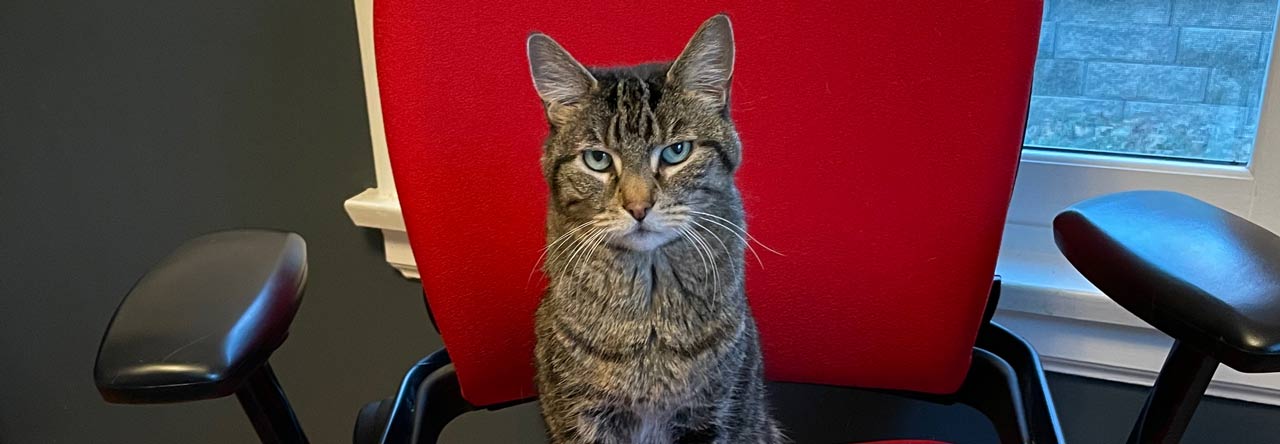About a year and a half ago, I received a survey request from the UW-Madison Art Department and found myself writing a lot about things from 15 years prior. I pasted my response as a draft in this here blog intending to expand on it at some point; since I appear to be on a “draft post finishing” kick these days, that point is now. Here’s a significantly extended version of what I told them about my long-distant experience matriculating there.
I enjoyed being an art major at UW-Madison (from roughly 1995 to 1998), though I certainly did not intend to follow that path when I enrolled at UW in 1993. (How I decided to add the art major is in itself another story, and an important one for me.) Had I been an aspiring art major in high school, it seems unlikely that I’d have gone to UW-Madison — I’d probably have aimed for MIAD (Milwaukee Institute of Art and Design) or somewhere else, maybe more ambitious. While making art was something I enjoyed a lot, it seemed neither to be my greatest strength nor my greatest passion. I did always enjoy computers, and my first work with Photoshop and QuarkXPress was in the art classroom at my high school, so it’s not a huge surprise that I ended up doing graphic design.
Of course, those formative experiences and the subsequent ones way up in the sixth and seventh floors of the gray concrete neo-brutalist “Humanities Building” are ancient history by now. I would guess (and hope) the Department of Art is better off today.
Overall, the quality of instruction varied greatly and the facilities were often sub-par, though our access to technology was pretty good. We had limited classroom space, and it wasn’t contiguous, but given that, the sense of community on the upper floors of Humanities was about as good as it could have been. If I’d tried harder, or sooner, connections I made with my classmates definitely could have become deeper friendships. But at the time I had my co-workers, my former dorm mates, and my drinking buddies, three groups that had a small amount of overlap.
I did feel that I learned a little bit about making art, at least, even though the level of instruction was mixed. Some instructors provided little to no individualized guidance, even in smaller classes, and generally I didn’t sense an overall commitment to improving students’ ability to navigate the larger world. For a self-directed student like me, opportunities were there. (I suppose I could have gone to office hours more frequently, but I spent a huge percentage of my time just working on projects.) There are a few faculty members I’m willing to list by name because I liked them. Stan Shellabarger was helpful in instilling a questioning attitude that informs me to this day, and Daniel Smajo-Ramirez was helpful in bridging the art/technology gap. Phil Hamilton, who taught graphic design, was always incredibly encouraging and warm. He left most of the detailed questions of execution to John Rieben. We used to call them “Santa and Satan,” perhaps unfairly to John, but his relatively harsh demeanor was a shock to our coddled adolescent brains. I took Professor Hamilton’s independent study “portfolio class” and was grateful for his emphasis on the need to have a portfolio, but I was shocked at how many of my classmates ended the semester without having completed one.
It turns out, of course, that that portfolio class during my final semester of college was the link to the rest of my future. My future former co-worker John Ziperski (also coincidentally a fellow Hartford High alumnus) came to that class looking for interns. I saw a terrific opportunity, even though the (now defunct) firm, HBG New Media, was then housed at the charming former cheese factory in distant Paoli (distant at least for those of us who relied on a bike and public transit, which I did at the time).
I convinced my mom it was not merely necessary but also safe for me to take possession of the 1983 Plymouth Reliant that had been sitting, undriven, in her yard for at least a year, so that I could take the internship at HBG. In 1998, HBG (which has its own interesting and cautionary tale) had a large plot on the periphery of the frontier of the great Internet expansion of the late 1990s — meaning we were among the first companies designing and building websites for mid-sized companies with occasionally recognizable brands (Tiger Toys, McGraw-Hill, lots of others). I learned a ton there from John, and Ryan McElroy, and Jessica Edil, and Eric Smith, and others.
And then, in 1999, I started getting annoyed by at least one new bad co-worker and feeling a little wanderlust. I got on the personals on a now-defunct website called swoon.com, met a girl, and — well, head on back to the earliest archives of this site, which start not too long after that.
Three years later, I got in my (new) car (long since sold), moved to the Bay Area, and here I am now. Yay!

